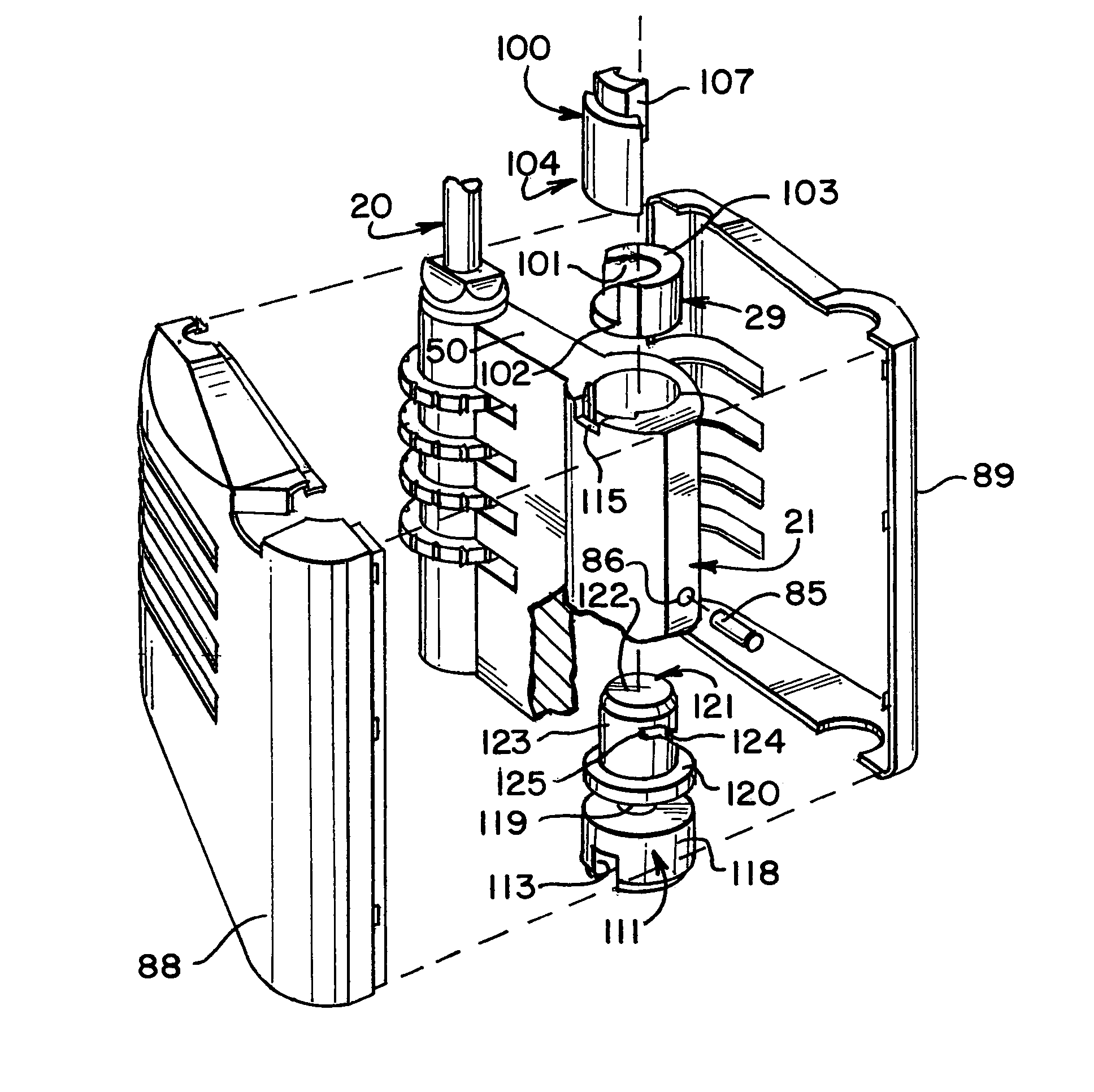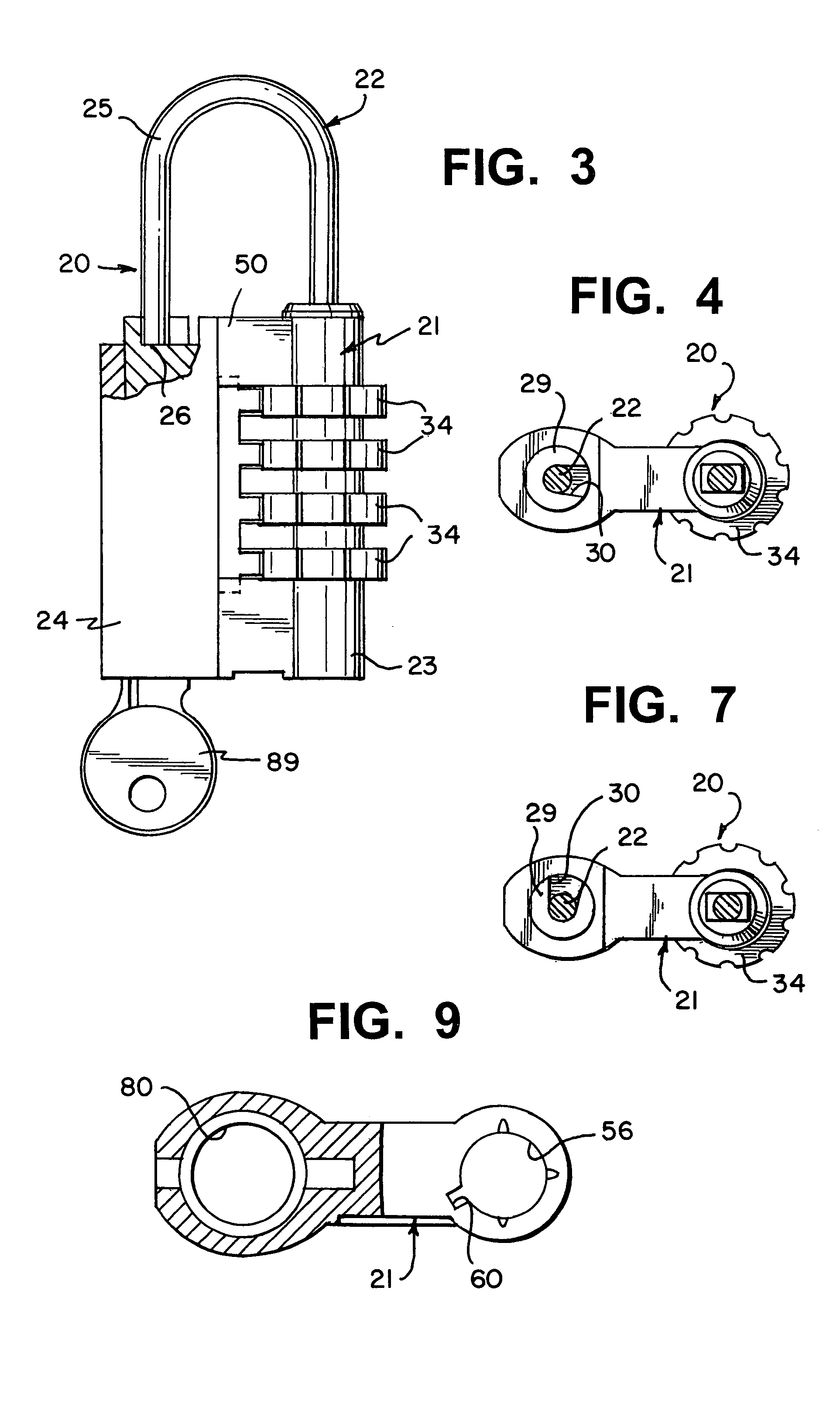Padlock with fully integrated dual locking systems
a dual locking and padlock technology, applied in padlocks, building locks, constructions, etc., can solve the problems of inability to overcome prior art constructions, inability to use entire combination locks, and common deficiencies of prior art combination locks which have not been successfully overcome, so as to achieve convenient production and effective
- Summary
- Abstract
- Description
- Claims
- Application Information
AI Technical Summary
Benefits of technology
Problems solved by technology
Method used
Image
Examples
Embodiment Construction
[0048]By referring to FIGS. 1–26, along with the following detailed discussion, the construction and operation of two alternate embodiments of dual mode padlock 20 of the present invention can best be understood. In the drawings and in the following detailed disclosure, the preferred two, alternate embodiment of the present invention are fully disclosed. However, this disclosure is provided for exemplary purposes only and, since the present invention can be implemented using further alternate constructions, it is intended that these alternate constructions are within the scope of the present invention.
[0049]In FIGS. 1–19, one preferred embodiment of dual mode padlock 20 of the present invention is depicted using a minimum of principal components, thereby achieving a dual mode padlock, while also substantially reducing the complexity found in most prior art padlocks. In this way, the present invention provides a highly effective, commercially desirable construction which is capable o...
PUM
 Login to View More
Login to View More Abstract
Description
Claims
Application Information
 Login to View More
Login to View More - R&D
- Intellectual Property
- Life Sciences
- Materials
- Tech Scout
- Unparalleled Data Quality
- Higher Quality Content
- 60% Fewer Hallucinations
Browse by: Latest US Patents, China's latest patents, Technical Efficacy Thesaurus, Application Domain, Technology Topic, Popular Technical Reports.
© 2025 PatSnap. All rights reserved.Legal|Privacy policy|Modern Slavery Act Transparency Statement|Sitemap|About US| Contact US: help@patsnap.com



